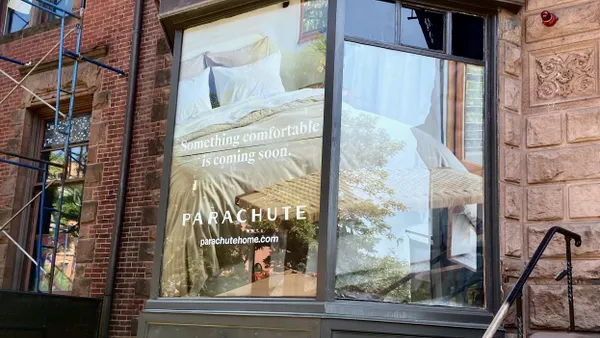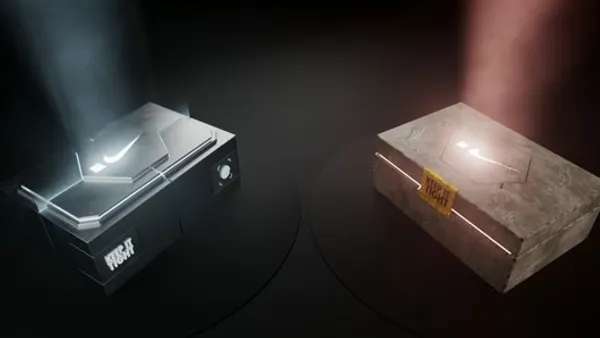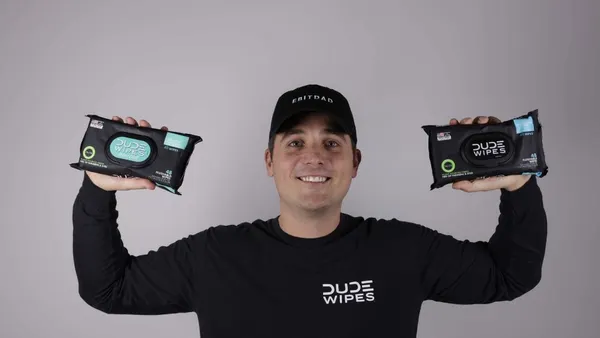Dive Brief:
-
A massive 85% of Amazon’s private label sales come from its AmazonBasics line, an indication that affixing "Amazon" to a product has little marketing downside, according to a report emailed to Retail Dive from e-commerce research and analytics firm One Click Retail. The remaining 15% is divided between 45 distinct labels, according to the report.
-
It's not always clear when an item is Amazon-manufactured: Amazon Echo and Echo Dot are obviously Amazon products and Wickedly Prime foods gives a little clue with its nod to Prime members, but Lark & Ro apparel and Happy Belly snack foods are decidedly less obvious, the report notes. "The distinct impression is that Amazon is testing out a variety of different ways to introduce private brands to the platform," according to One Click Retail CEO Spencer Millerberg.
-
AmazonBasics (which started out in batteries and still mostly offers electronic essentials like phone cords) has begun to take sales from other private labels as it gets into more categories, according to the report. Its Pinzon bed and bath sales have dropped 50% so far this year (about $8M) since AmazonBasics moved into that turf, with the latter brand growing about 50% (or nearly $10M in sales), primarily in bedding. "[T]his indicates an intention on the part of Amazon to reinvest in the broader (and more successful) AmazonBasics brand and move away from niche labels," Millerberg said.
Dive Insight:
Store brands are popular these days, especially among younger shoppers like millennials, who came of age during the Great Recession and are less brand-loyal than their parents and grandparents. That’s provided fertile ground for retailers with high-quality private label brands.
The number of heads of households shopping at dollar stores under 35 years-old that earn more than $100,000 a year increased 7.1% between 2012 and 2015, compared to 3.6% at all retail stores, according to Nielsen research. Some 29% of millennial dollar store consumers earn over $100,000 annually and accounted for about 25% of sales at those stores, much of it to no-name brands of common household items, according to market research firm NPD's Checkout Tracking.
Amazon clearly appreciates all that. AmazonBasics is now the third bestselling brand on Amazon.com and ranks highly in many product groups (#4 overall in both electronics and wireless), according to One Click Retail. The bulk of AmazonBasics sales are in electronics accessories, including wireless, camera and computers (with an unexpected bestseller, paper shredders), the brand's third-largest category overall.
In fact, 19 of the top 20 bestselling private brand items on Amazon.com are AmazonBasics, with an Apple-certified USB cable the top item in the U.S., Canada, Germany and the U.K. In Canada, AmazonBasics is the #2 brand overall, though it’s not as strong of a competitor in Europe. In France, the labels ranks 20th, In Germany 28th and in the U.K. 30th, One Click Retail said, though researchers there believe the rankings reflects a lag period and that it's just a matter of time before private brands take off internationally, too.
Through its Amazon Elements line, the e-commerce giant has other well performing private label products, including baby wipes, where the "sensitive, 480 count" choice earned $2.5 million in sales this year so far. In fact, according to One Click Retail, Amazon Elements ranks third behind Huggies and Pampers in the baby wipes space.
In a challenge to both department stores and specialty retailers, Amazon’s bestselling product group among its other 45 private labels is apparel (by what One Click Retail deems a significant margin) with more than $20 million in sales. That merchandise includes Lark & Ro, Amazon Essentials, Buttoned Down, Mae and Goodthreads. The next leading product group is home, with sales mostly from its Pinzon line.
Amazon’s purchase of Whole Foods, and its 365 store brand, promises to move the retailer further in its consumer product competition. At the end of last month, Amazon made more than 2,000 Whole Foods items available through its website in the U.S., which moved some $500,000 in sales in just one week. Almost all (96%) of that was though Amazon’s Prime Pantry, Prime Now and Amazon Fresh units, while just 4% was through its main platform. Amazon doesn’t seem to have anticipated that level of success, Millerberg said, considering that just 7% of the top 100 items remained in stock at the end of the first week, leading to a 38% drop in sales during the second week.
Still, it’s too early to quantify the full impact of Amazon’s Whole Foods acquisition, he said, although it’s clear that retailers and brands have a "significant new competitor" because of it. Still, competitors can keep an eye on Amazon's private brand strategy to learn how to develop new products and compete online. "If you're going to learn strategy and best practices from anyone, why not learn from the master?" Millerberg writes.













